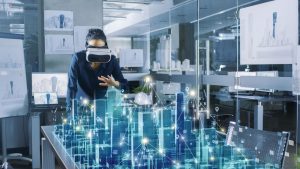The global pandemic has posed many inconveniences and has effectively turned our lives upside down in so many ways. But if you look carefully, there are numerous ways the pandemic has driven us to experience some of the same things we did when social distancing, mask wearing, and getting out of the house was not central to our daily living.
- Virtually visiting museums has become an interesting outcome of the pandemic that’s likely here to stay. Just after the pandemic began, The New York Times reported that the Musée du Louvre in Paris had “a tenfold increase in web traffic, from 40,000 to 400,000 visitors per day. Now, the Louvre has put its entire collection online.
- Take a virtual tour of the National Gallery of Art. It may not have the brick, mortar, buzz of the crowds, or sunlight beaming in the window, but it sure feels close to being there. With literally two mouse clicks, you’re in the main hallway navigating around the museum, visiting virtual exhibitions with remarkable semblance to being there and walking about. The only things missing are the tired feet and the long distances trekked as you sit in front of your laptop from anywhere and see breathtaking works of art.
The Consummate Technology Showcase
Using virtual reality to demonstrate the merits of simulation and the power of virtual reality is precisely how innovations have been displayed via Dassault Systemes’ 3DEXPERIENCELab. By wearing a VR helmet a visitor is immersed in its Museum of Innovation, a virtual reality experience that allows anyone to see and experience firsthand how simulation, modeling and digital technology is used to solve problems in a multitude of industries and venues.
With virtual reality, observers can lucidly see different approaches in arriving at personalized health solutions. Or they may see how  sustainable cities can be built, how sustainable consumer goods and packaging may be created, and ultimately witness in 3D how world problems and initiatives can be tackled and approached.
sustainable cities can be built, how sustainable consumer goods and packaging may be created, and ultimately witness in 3D how world problems and initiatives can be tackled and approached.
Can We Extend “Reality?”
Let’s take things one step further. Let’s use virtual reality to allow students to walk across the surface of Mars. Or how about dive to the bottom of the ocean without a tank on their back. Or let them observe a panoramic tour of a foreign country. With much of academia occuring online during COVID, VR, XR (extended reality – the immersive technologies that blend real and virtual environments) have really been a boost to the virtual classroom.
Sean Hauze, Ph.D., director of instructional technology services at San Diego State University, describes the extended reality experience as bringing students inside the Barrier Reef or allowing them to space walk on Mars. Says Professor Hauze: “Now the definition of impossible has been expanded, given that the vast majority of our courses are virtual … and immersive learning is the key to make this all possible.”
Of course, Virtual Reality technology in higher education is also being used to train the workforce of the future. At Wichita State University, for example, the 3DEXPERIENCE Center enables aerospace engineering students to collaborate virtually with corporations on product development, explore new designs in fully immersive 3D and see the results of multiple aviation simulations including bird strikes, multi-physics analysis and many others.
At the end of the day, all experience is human. With virtual reality and simulation technology, we’re able to take virtual tours of historic art, explore the human body and wonders of the world. The pandemic may have put a halt to many in-person experiences, but has also yielded some goodness we may have never known otherwise.
